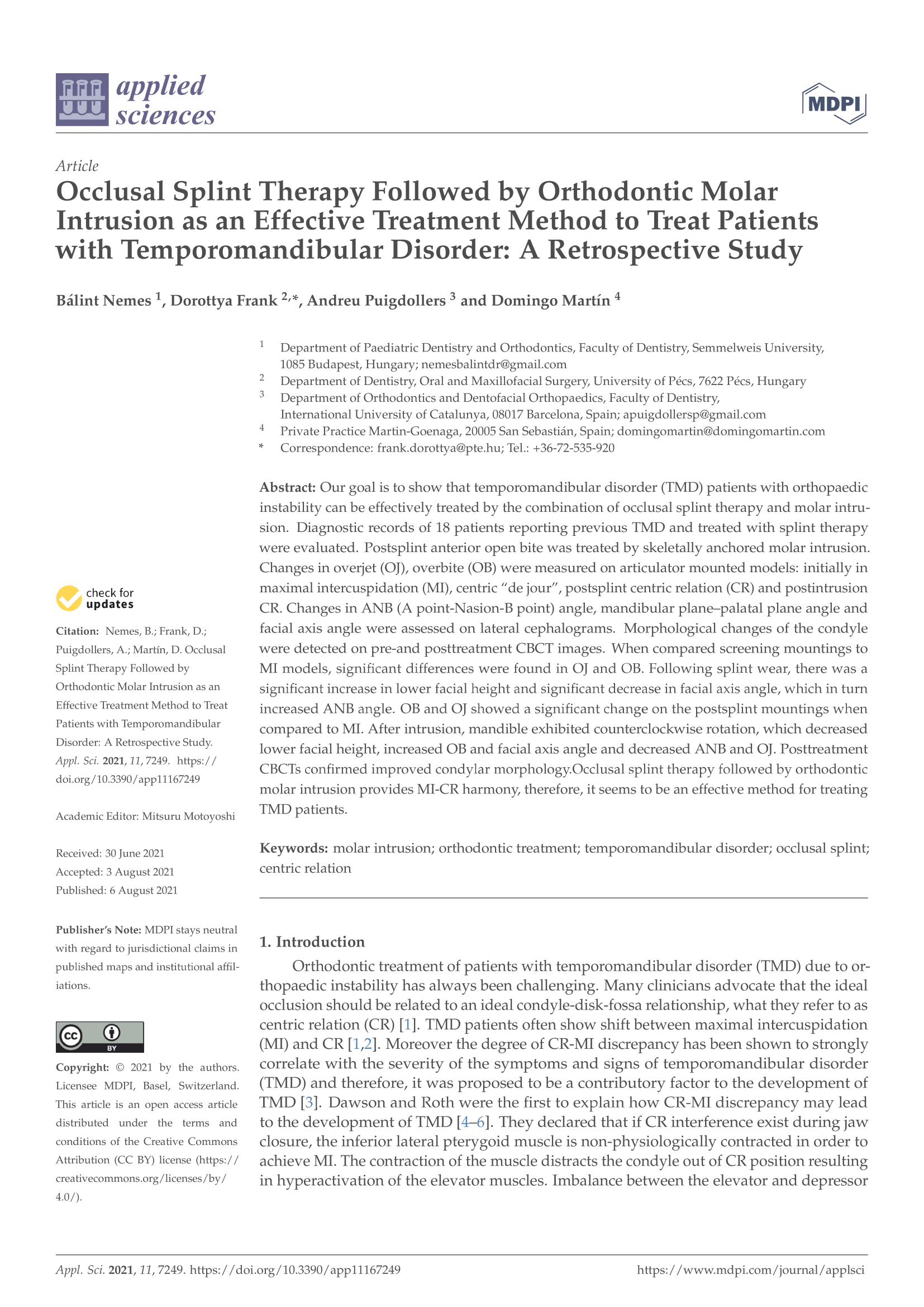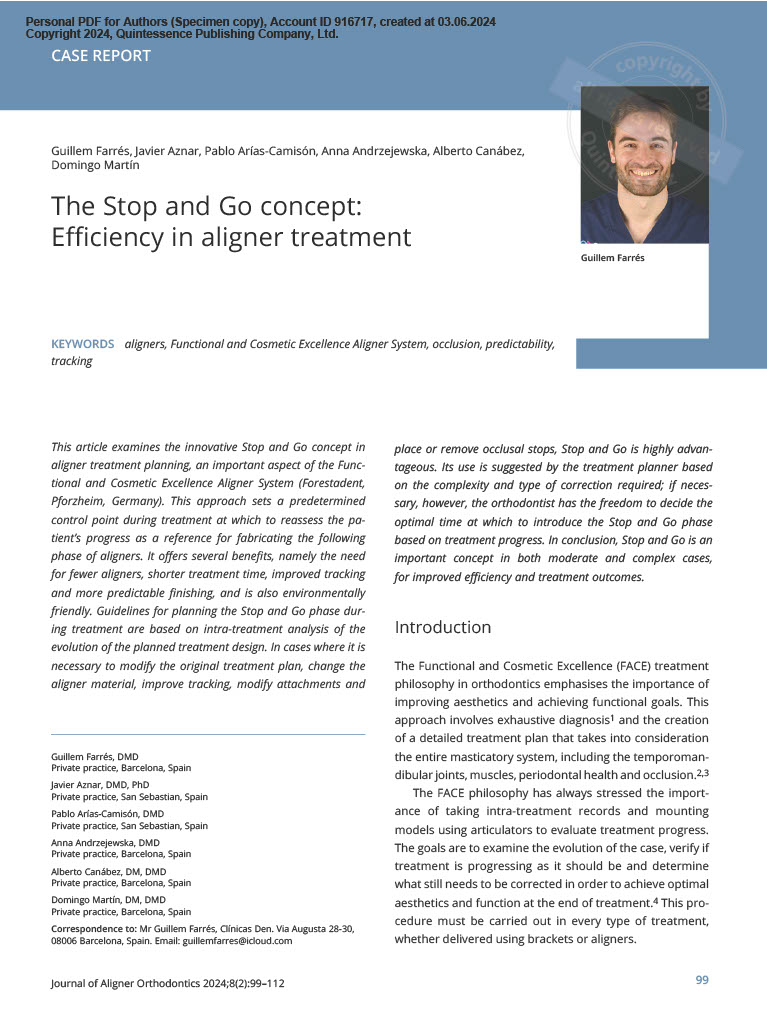Paper language: English

Occlusal Splint Therapy Followed by Orthodontic Molar Intrusion as an Effective Treatment Method to Treat Patients with Temporomandibular Disorder: A Retrospective Study
AUTHOR: Bálint Nemes, Dorottya Frank , Andreu Puigdollers and Domingo Martín
English abstract
Our goal is to show that temporomandibular disorder (TMD) patients with orthopedic instability can be effectively treated by the combination of occlusal splint therapy and molar intrusion. Diagnostic records of 18 patients reporting previous TMD and treated with splint therapy were evaluated. Postsplint anterior open bite was treated by skeletally anchored molar intrusion. Changes in overjet (OJ), overbite (OB) were measured on articulator mounted models: initially in maximal intercuspidation (MI), centric “de jour”, postsplint centric relation (CR) and postintrusion CR. Changes in ANB (A point-Nasion-B point) angle, mandibular plane–palatal plane angle and facial axis angle were assessed on lateral cephalograms. Morphological changes of the condyle were detected on pre-and posttreatment CBCT images. When compared screening mountings to MI models, significant differences were found in OJ and OB. Following splint wear, there was a significant increase in lower facial height and significant decrease in facial axis angle, which in turn increased ANB angle. OB and OJ showed a significant change on the postsplint mountings when compared to MI. After intrusion, mandible exhibited counterclockwise rotation, which decreased lower facial height, increased OB and facial axis angle and decreased ANB and OJ. Posttreatment CBCTs confirmed improved condylar morphology.Occlusal splint therapy followed by orthodontic molar intrusion provides MI-CR harmony, therefore, it seems to be an effective method for treating TMD patients.Download paper (PDF)
Access our most valuable content free of charge.
Related Scientific papers
1st FACE online symposium
The world is changing and in FACE, following tradition, we wont be left behind.
As we all know, we can’t travel or meet, so once again, we will take advantage of technology to turn the situation around.
«Work hard, play hard«
Two days full of experiences, thanks to the participation of 20 different clinics.
We’ll see you on February 26 and 27





